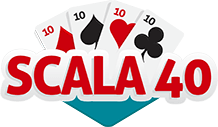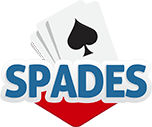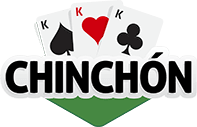Description
- Players - 4
- Deck of cards - 40 cards Napolitan or Spanish
- Difficulty - Easy
- Objective of the Game - sum the established point to the match (usually 16 points).
Distribution and game
The dealer puts 4 covered cards on the table and shares the rest between the players, until each player has 9 cards, and 4 uncovered cards are on the table. Each player, in your turn, plays a card, initiated by the player at the right side of the dealer. The others follow in anticlockwise way until finish the cards.
If the card played values the same as a card or the sum of the values are more than the cards on the table, the player catches the card played and the one of the same value, putting it in a pile in front of your position. If don?t, let the card on the table.
If a player catches all the cards on the table, he gets a ?Scopa?, that values 1 point . To score a Scopa, a player puts their own pile in an uncovered and crossed card.
In case of having different combinations of cards that the player can catch playing the same card, it is obligatory to catch the combination with a lower number of cards. If there are more combinations made by the same amount of cards, the player can choose. Example: if on the table have an Ace (value 1), a 3, a 4, a 5 and a Jack (value 8), the player, playing a Queen (value 9) can catch his choice the Ace and the Jack or the 4 and 5 (combinations made by two cards). Cannot catch the Ace, the 3 and the 5, combination made by three cards. In the final hand all the cards that are on the table are from who catches last.
Cards Ponctuation
At the end of each hand is calculated the ponctuation obtained from each pair by the following way:
4 points of ?Deck Cards?:
- the pair that catches more cards receive 1 point. In the case of draw, the point is not given.
- The pair that catches more cards from the Diamond (spanish cards) or Denari (neapolitan cards) receives 1 point. In the case of draw, the point is not given.
- The pair that wins the ?Primiera? wins 1 point. The Primiera is calculated by the following way: the 7 values 21 points, the 6 values 18 points, the Ace values 16 points, the 5 values 15 points, the 4 values 14 points, the 3 values 13 points, the 2 values 12 points and the figures values 10 points. Each pair sums the points of only one card of each suit between those they catch. Who has the higher ponctuation wins the Primiera. Example: a pair catches 7 of heart, 7 of club, 7 of diamonds and 6 of spades, reaches to 81 points. The other pair can have maximum 7 of spades and 6 of other suits (clubs, heart and diamonds) for a total of 75 points. Soon, the point of the Primiera will go to the first pait. In the case of draw, this point is not given.
- The pair that catches the 7 of Diamonds (called 'Sette Bello') receives 1 point. Besides these, are given the following points:
- Each Scopa values 1 point.
The points obtained in each hand are summed to the points obtained in the previous hands and the pair that reaches or passes first the 16 points wins the match. If both pairs reach or pass the 16 points in the same hand, who has more ponctuation wins. In the case of pairities are played one or more hands to broke the tie, until ends the equality.
Learn how to play other Italian Card Games
Amplify your knowledge at Card Games reading the rules and watching videos from similar games to Scopone Scientifico .











